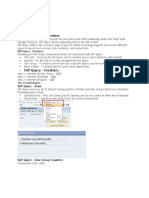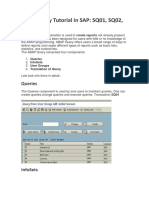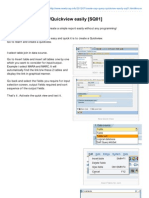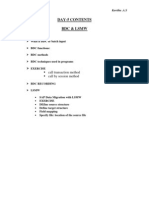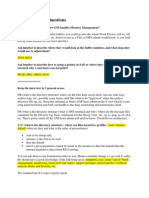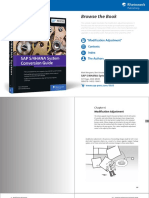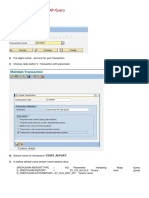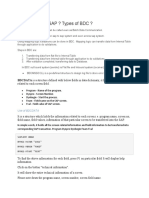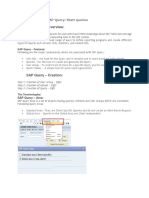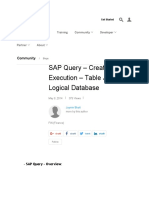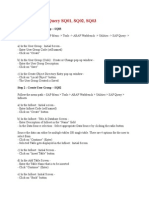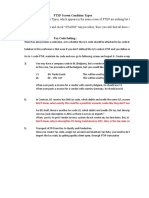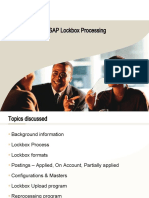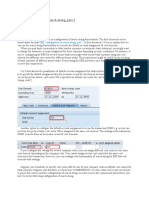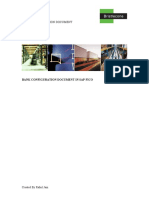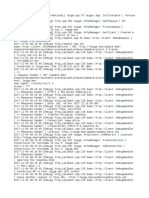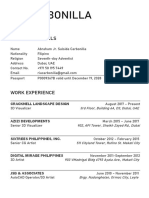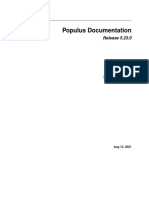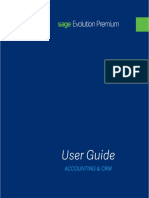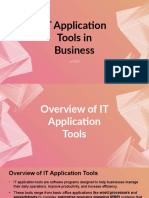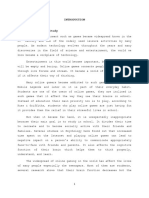0% found this document useful (0 votes)
273 views34 pagesSAP Query Guide for Quick Reports
This document provides an overview of SAP Query, which allows users to generate reports without ABAP coding. It discusses the components of SAP Query including queries, infosets, user groups, and translations. It describes the different types of reports that can be created like basic lists, statistics lists, and ranked lists. It also outlines the steps to create a user group, infoset, and basic query including assigning fields and specifying selection screen parameters. Making a field mandatory on the selection screen is also explained.
Uploaded by
Kenisha KhatriCopyright
© © All Rights Reserved
We take content rights seriously. If you suspect this is your content, claim it here.
Available Formats
Download as PPTX, PDF, TXT or read online on Scribd
0% found this document useful (0 votes)
273 views34 pagesSAP Query Guide for Quick Reports
This document provides an overview of SAP Query, which allows users to generate reports without ABAP coding. It discusses the components of SAP Query including queries, infosets, user groups, and translations. It describes the different types of reports that can be created like basic lists, statistics lists, and ranked lists. It also outlines the steps to create a user group, infoset, and basic query including assigning fields and specifying selection screen parameters. Making a field mandatory on the selection screen is also explained.
Uploaded by
Kenisha KhatriCopyright
© © All Rights Reserved
We take content rights seriously. If you suspect this is your content, claim it here.
Available Formats
Download as PPTX, PDF, TXT or read online on Scribd
/ 34
